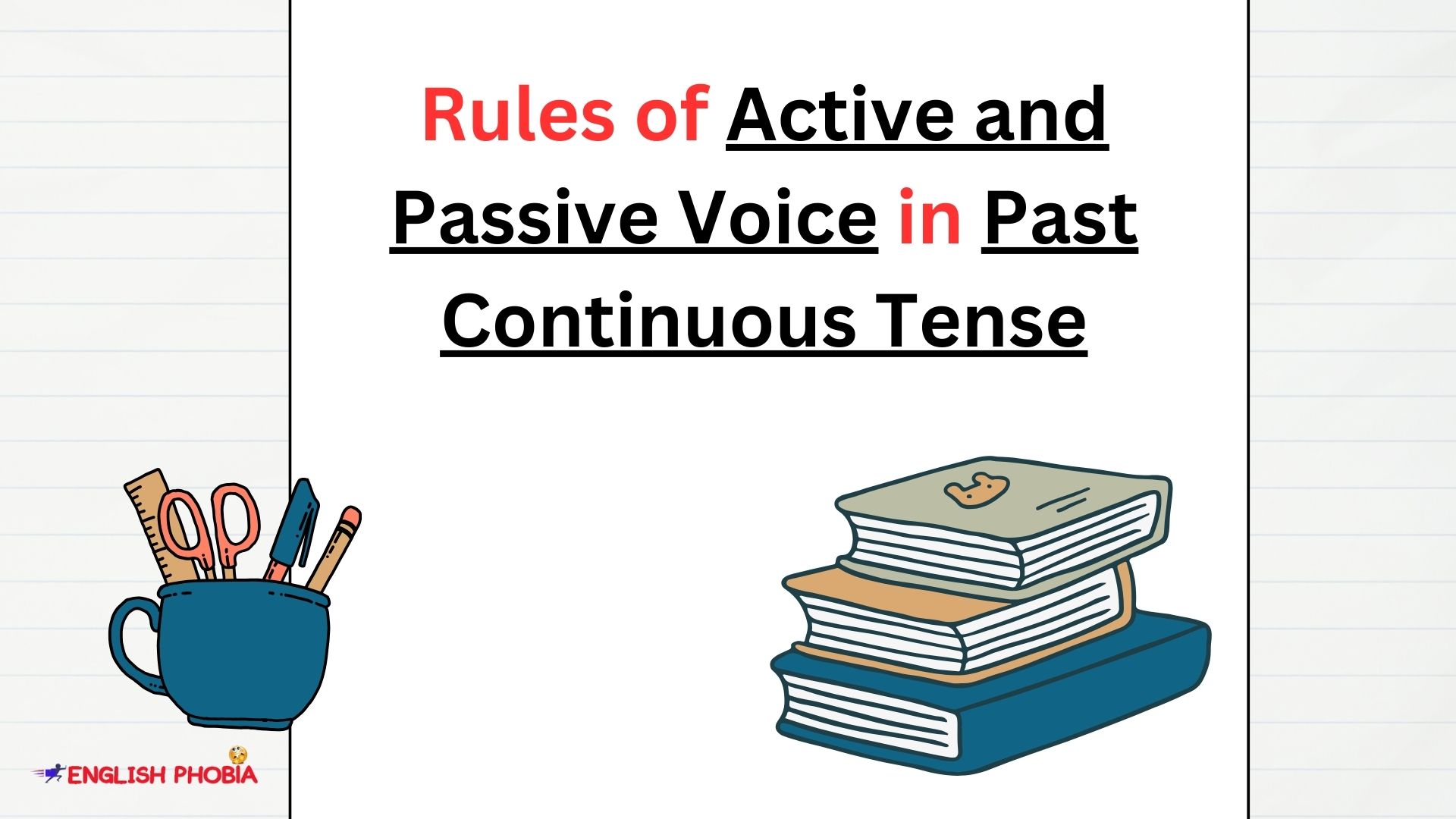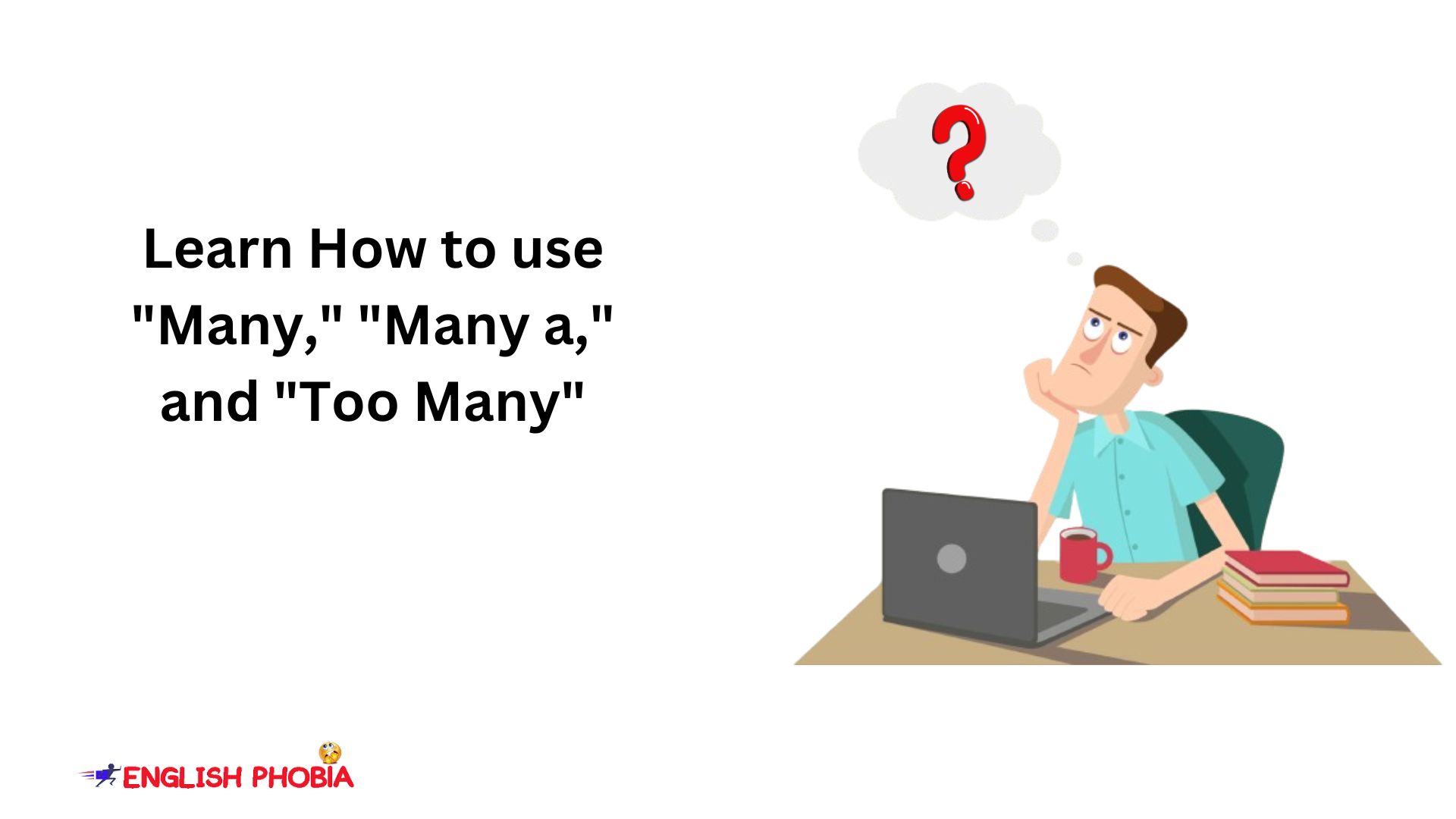Learning active and passive voice in past continuous tense is important for effective English language usage. In this article, we are going to start a journey into the active and passive voice within the past continuous tense.
By the end of this discussion, you will learn how to use affirmative, negative, and interrogative sentences in both active and passive voice within this specific tense.
Rules for Active Voice in Past Continuous Tense
1) Affirmative Sentences:
We form the past continuous tense using the auxiliary verb “was/were” combined with the base form of the main verb, followed by “ing.”
For example,
She was singing a beautiful song.
2) Negative Sentences:
In negative sentences, we add “not” after the auxiliary verb “was/were.”
For example,
He wasn’t playing football.
3) Interrogative Sentences:
Questions in active voice require an inversion of the subject and auxiliary verb “was/were.”
For example,
Were they studying when you called?
Rules for Passive Voice in Past Continuous Tense
1) Affirmative Sentences:
In passive voice, we form the past continuous tense using the auxiliary verb “was/were” + “being” + past participle of the main verb.
For example,
1) The cake was being baked by her.
2) The car was being washed by the mechanic.
3) The cake was being decorated by the baker.
4) The report was being reviewed by the manager.
2) Negative Sentences:
To craft a negative passive sentence, add “not” after the auxiliary verb “was/were.”
For example,
1) The book was not being read by anyone.
2) The movie wasn’t being watched by anyone.
3) The letter wasn’t being read by him.
4) The task wasn’t being completed by the team.
3) Interrogative Sentences:
Passive voice interrogatives initiate with the auxiliary verb “was/were,” followed by the subject.
For example,
1) Were the keys being kept in the drawer?
2) Was the letter being delivered by the postman?
3) Were the flowers being watered by anyone?
4) Was the meeting being conducted in the conference room?
With these guidelines in hand, you’re now equipped to communicate effectively in both active and passive voice within the past continuous tense.
Active Voice Examples:
Affirmative Sentences:
For example,
1) They were painting the walls all morning.
2) She was reading a captivating novel during the flight.
3) The children were playing in the park when it started raining.
4) He was cooking dinner while listening to his favorite podcast.
5) The team was practicing tirelessly for the upcoming match.
Negative Sentences:
For example,
1) Roma was not watching TV.
2) She was not studying for the exam last night.
3) The dog was not barking at the stranger.
4) They were not working on the project over the weekend.
5) He was not listening to music while driving.
Interrogative Sentences:
For example,
1) Were you sleeping when the storm began?
2) Was she dancing when you entered the room?
3) Were they discussing the plan when you joined the meeting?
4) Was he fixing the car when it broke down?
5) Were the birds chirping when you woke up?
Learn the active and passive voice in past indefinite tense for further reference.
Passive Voice Examples:
Affirmative Sentences:
1) The cake was being baked by her mother.
2) The roads were being repaired by the construction crew.
3) The song was being sung by the talented vocalist.
4) The novel was being written by the renowned author.
5) The pictures were being taken by the professional photographer.
Negative Sentences:
1) The report was not being reviewed by the manager.
2) The project was not being discussed in the meeting.
3) The letter was not being delivered by the postman.
4) The cookies were not being baked by the baker.
5) The game was not being played by the team.
Interrogative Sentences:
1) Was the cake being baked when you arrived?
2) Were the roads being repaired yesterday?
Conclusion
Learning the active and passive voice in the past continuous tense is important. With the simple rules and easy explanations allow us to use them in our everyday English. In the affirmative, negative, and interrogative examples, it becomes very easy to use these sentences for us. In case, you have any difficulty using them please let us know in the comment box below.











